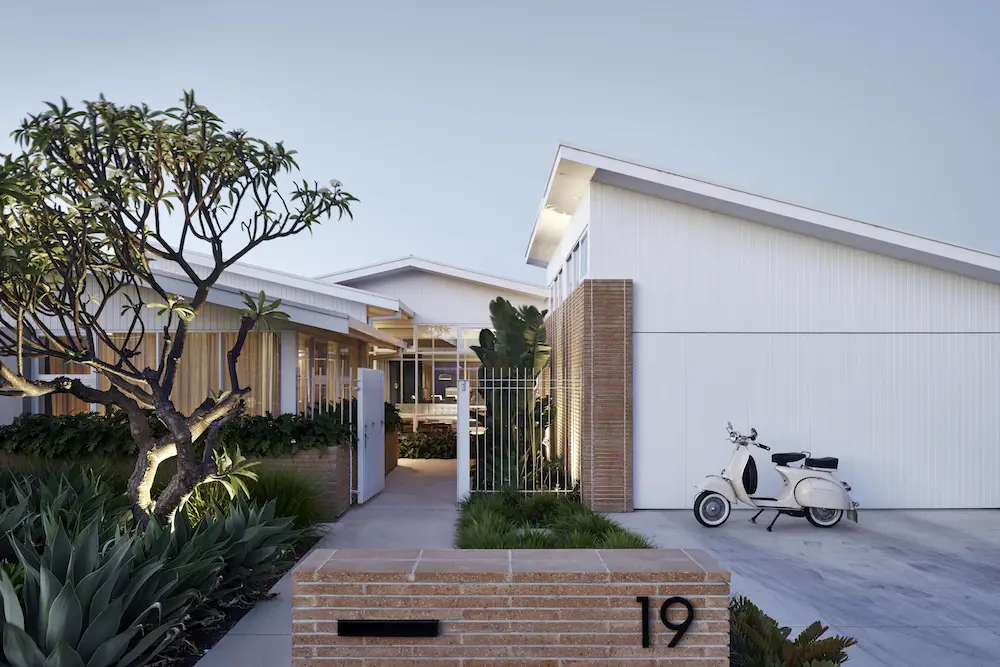
Text provided by Architects Ink
With a strong personal connection to the site, Architects Ink have crafted a highly considered and refined home and have been recognised with the 2018 Robert Dickson Award for Interior Architecture.
As the architect’s own residence, the spirit and integrity of the 1959 home has been maintained. GA house is a home built in 1959 and was the first residence in a new estate in Grange. The previous owners being Gina’s aunt and uncle. With fond memories as a child growing up with the house, Gina & Tony bought the home in 1998.
The philosophy of the renovation was to establish a good relationship with the existing structure as it had ‘good bones’. It was important to celebrate sixties architecture and the wider family’s sentimental value by seamlessly merging materials and new spaces.
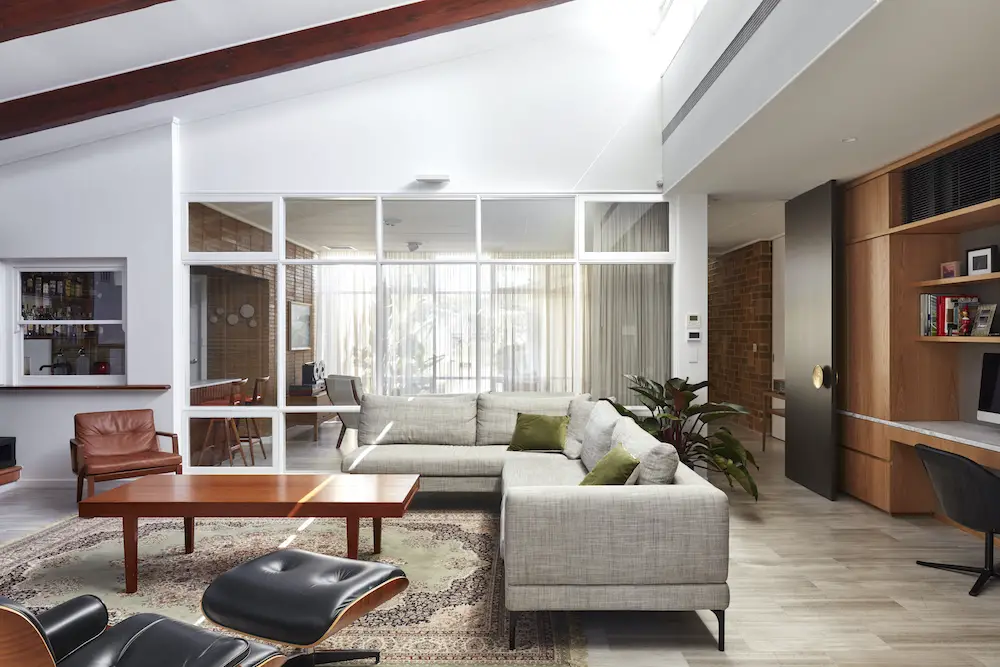
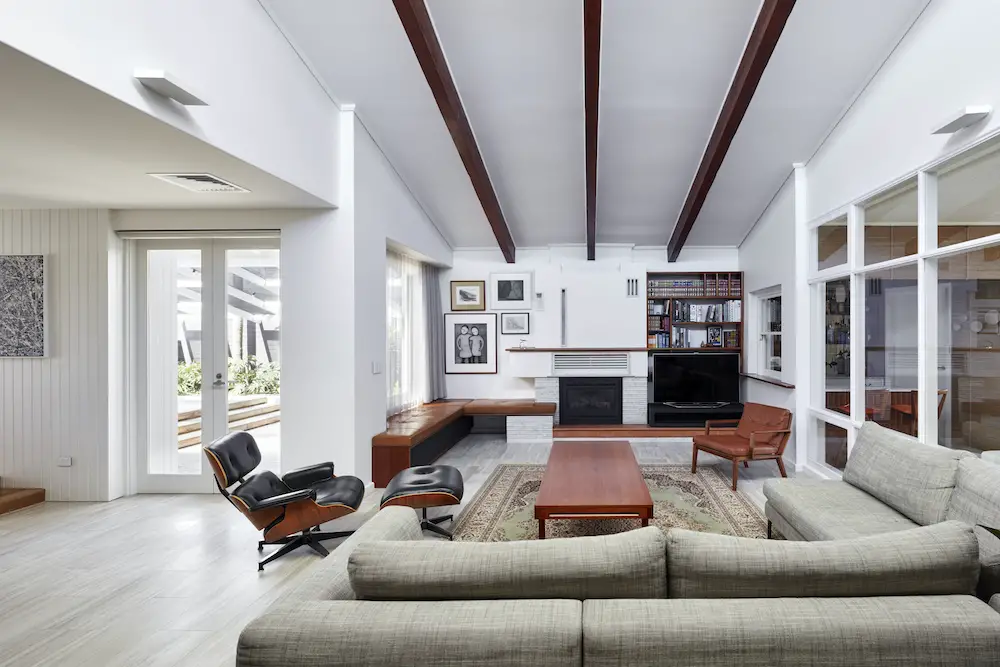
We were conscious not to recreate another typology and endeavoured to maintain the original architecture being the original context for this zone in Grange.
The existing planning of the 1959 house was a ‘T plan’ orientated to the street and a central courtyard. Bedrooms planned to the back of the site also had orientation to the courtyard and the rear pool and patio. A circa 1970 addition for an expanding family included enclosing the courtyard with a tall space with raking ceilings and exposed rafters.
The volume created a new positive contribution internally but sacrificed the relationship to private outdoor spaces from living areas.
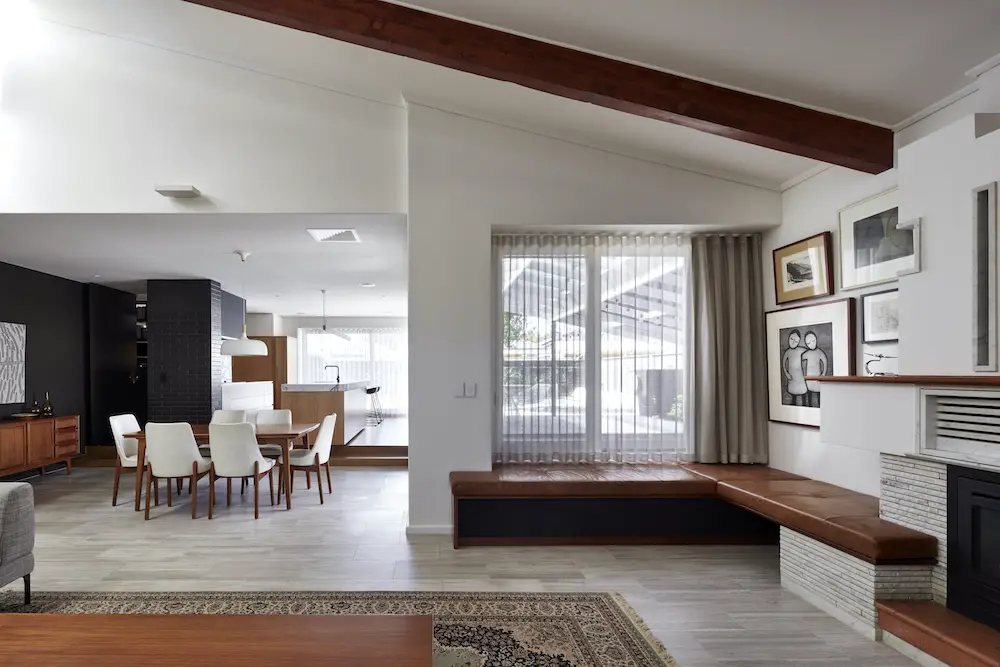
The 2016 refurbishment comprised of relocating the bedrooms and kitchen and creating a new addition to the street. The strategy then provided the opportunity to re-plan the living area with the kitchen acting as a focal point and heart of the house servicing both living area, pool, patio and external wood oven.
Retractable doors and sometimes a flowing curtain stage the threshold between inside and outside.
Through the balance of considered planning and meticulous detail, the design delivers an exceptional interior environment. Finishes are celebrated in their natural state, providing coherent simplicity in understanding the space.
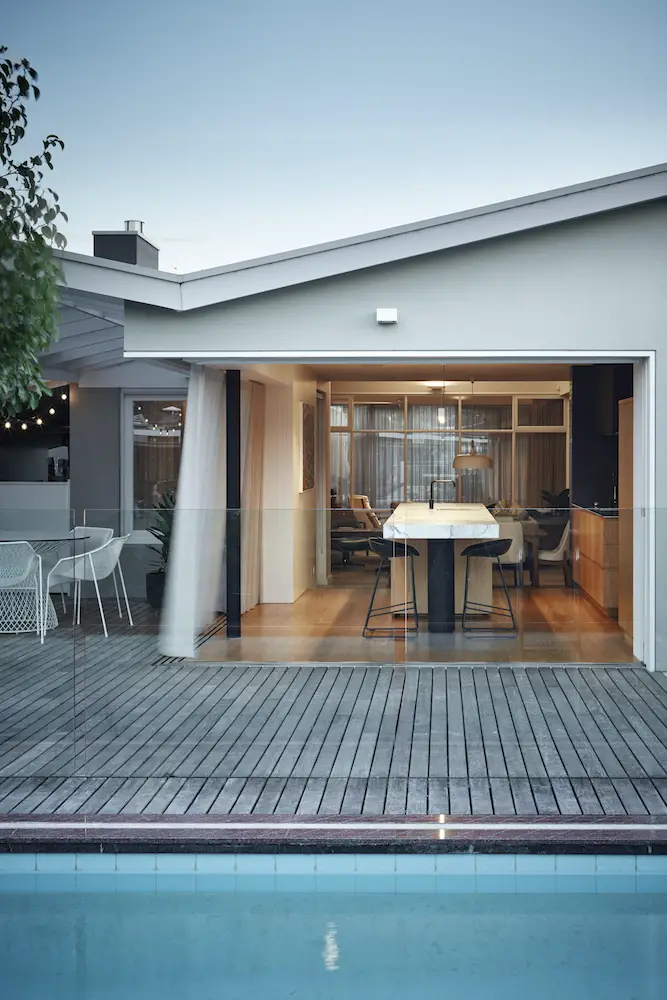
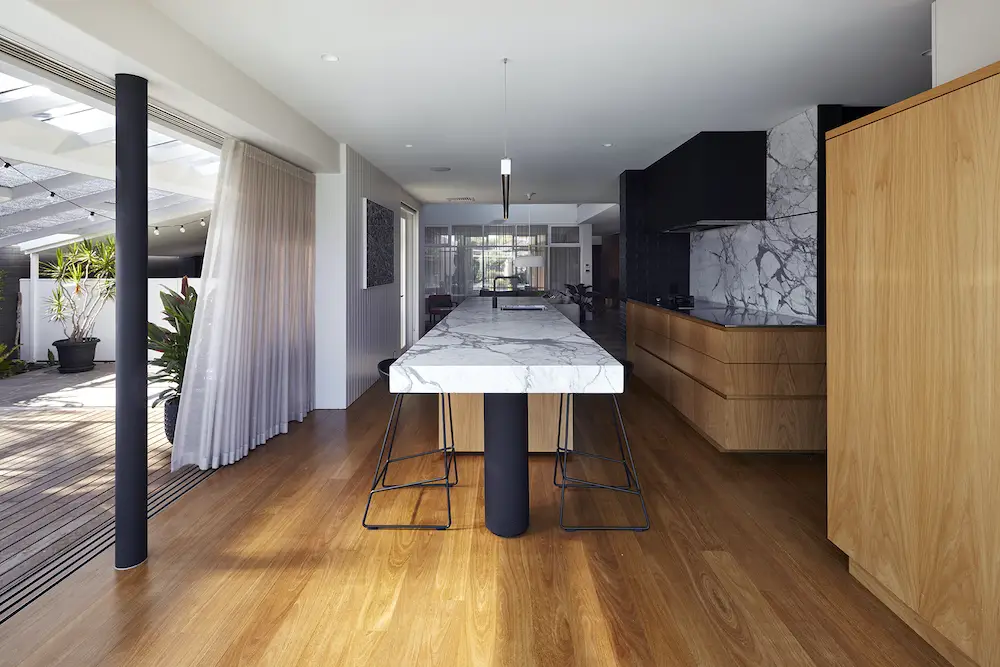
To maintain the spirit of the original we decided to, much like the sixties modernists, give ‘truth to the materials’ and expose any structural elements. The finishes were left in a natural state providing a coherent simplicity in understanding the space.
Existing materials were used as a cue to integrate new finishes applied in an honest manner.
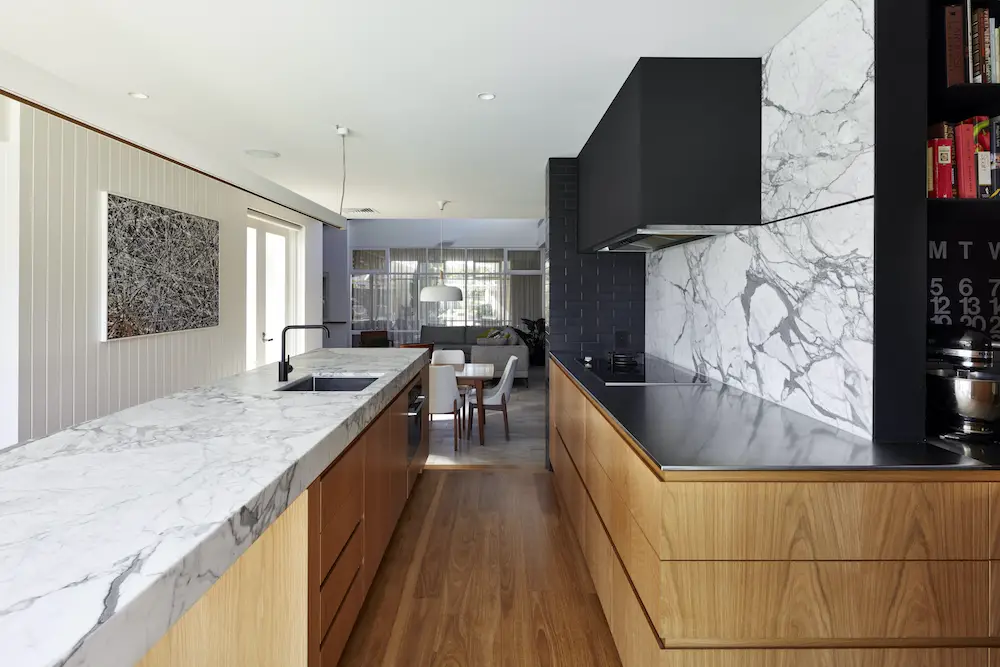
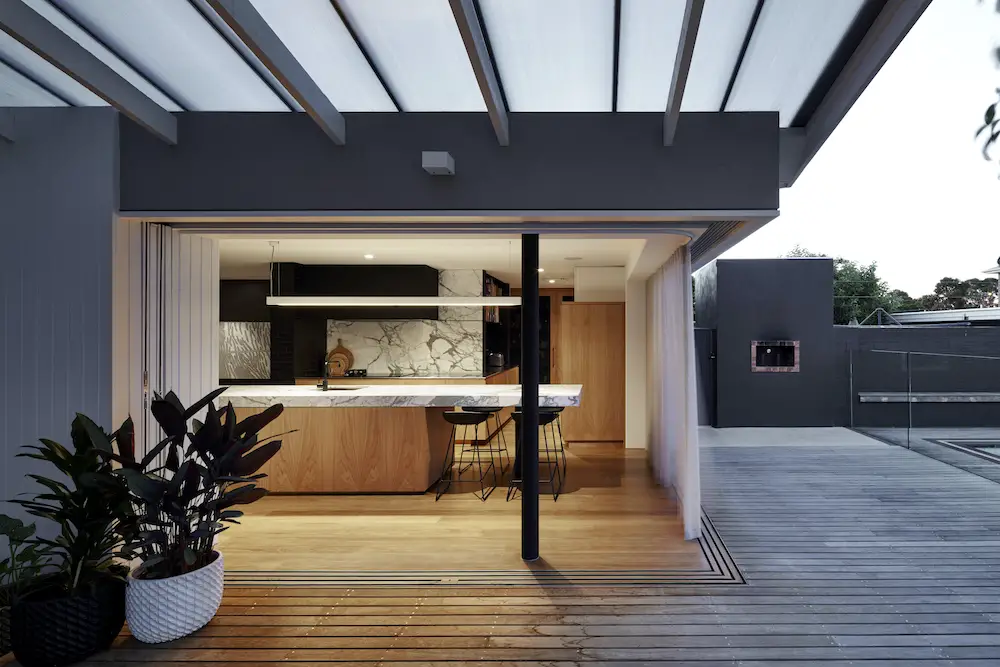
Travertine stone floors tie living areas together with a raised timber floor to the kitchen. Materials consist of honed Calacatta marble and stainless-steel benchtops, black mild steel shelving and American oak joinery. Wet areas are themed with textured tiles as the focus with simple planning and santitaryware complementing the space.
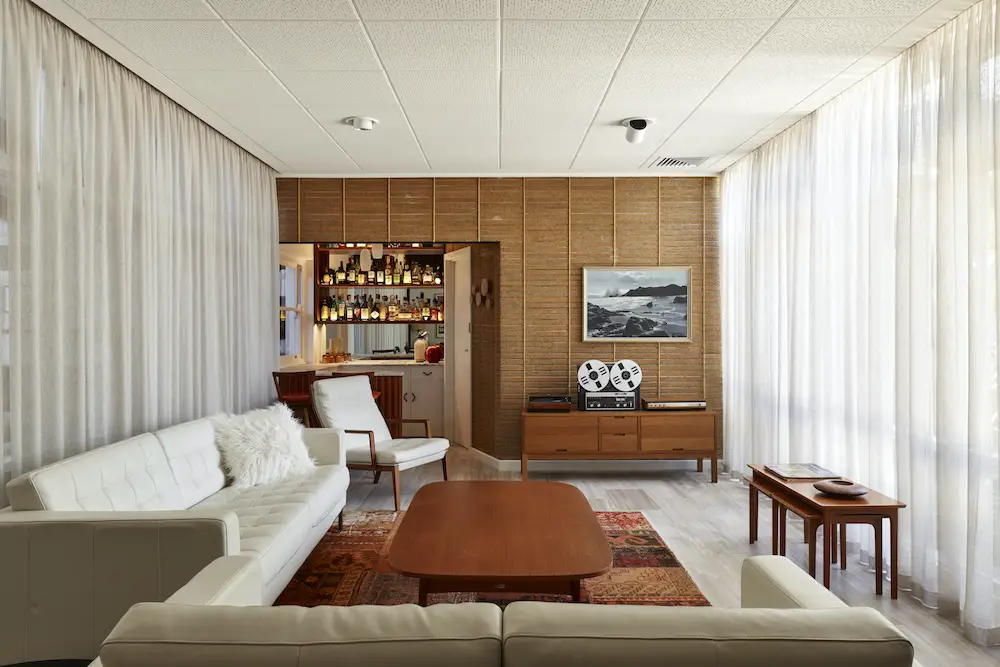
Direct relationships with trades saw the integration of a stonemason replicating original details of the pointed brick walls which were no longer manufactured. The pointed brick walls are the standout feature of the interior.
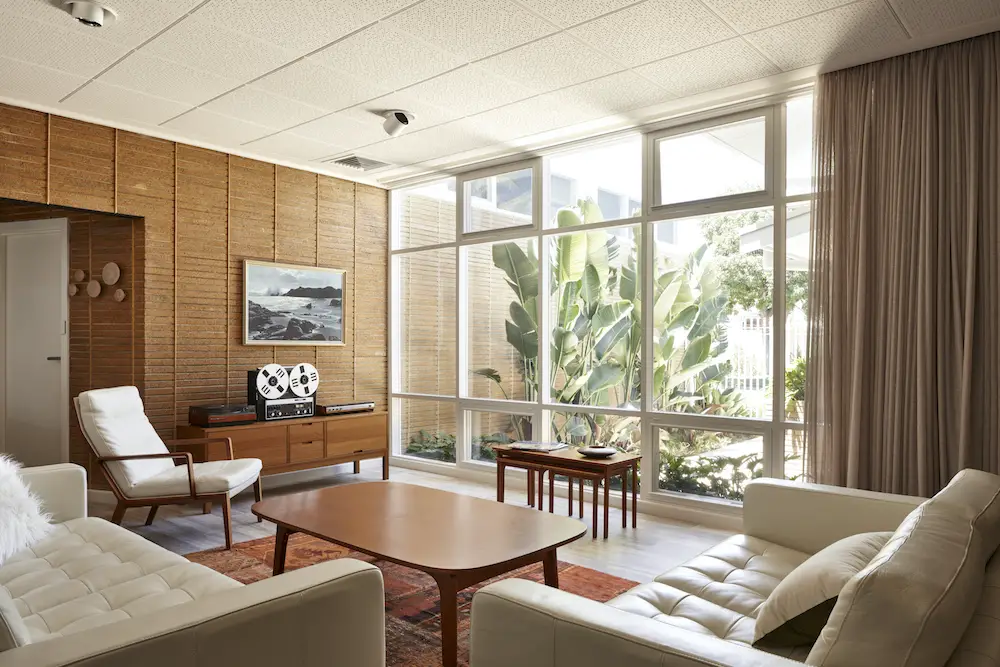
The joiner seamlessly integrated stone, steel and glass into all the joinery. Textured tiling, custom door handles and stonemason’s craftsmanship replicate original details. The custom die-cast bronze door hardware was made for the project creating the timber mould for casting and managing the machining and finishing process.
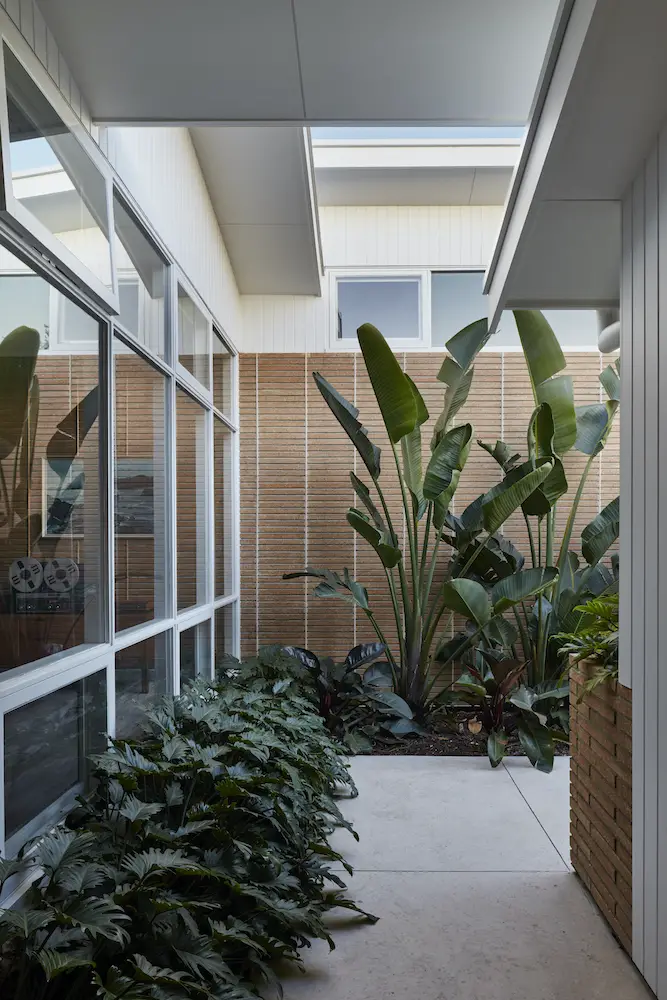
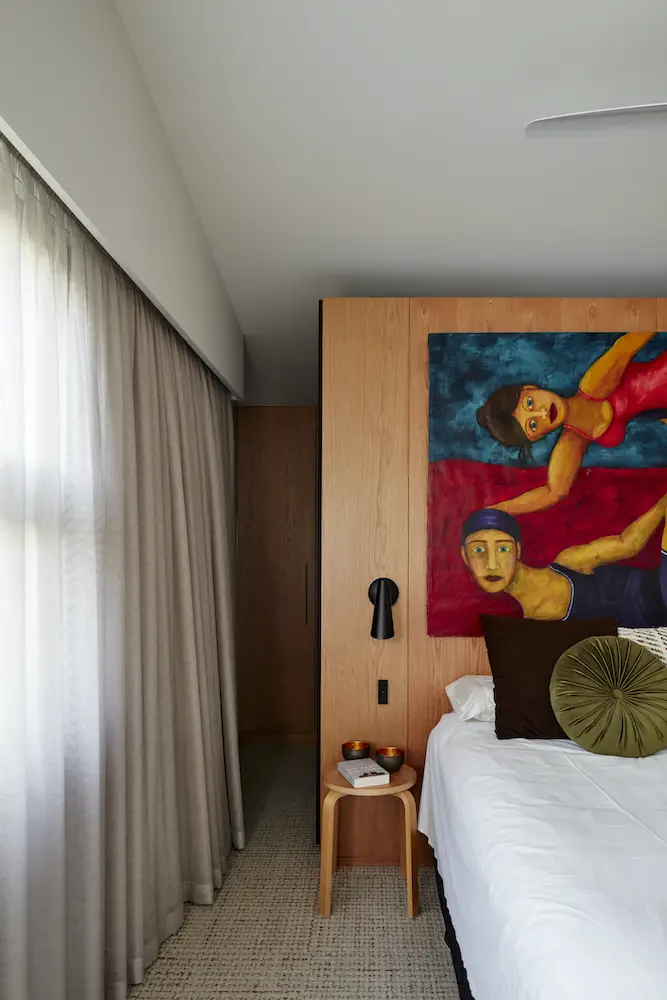
The added value and benefit to Gina and Tony of reduced capital cost by recycling the existing home and not having the expense of building a new home is a highlight.
The real benefit is that they have now remodeled the home to suit their family’s needs with the wider benefit of maintaining the spirit of what has now become a family heirloom.
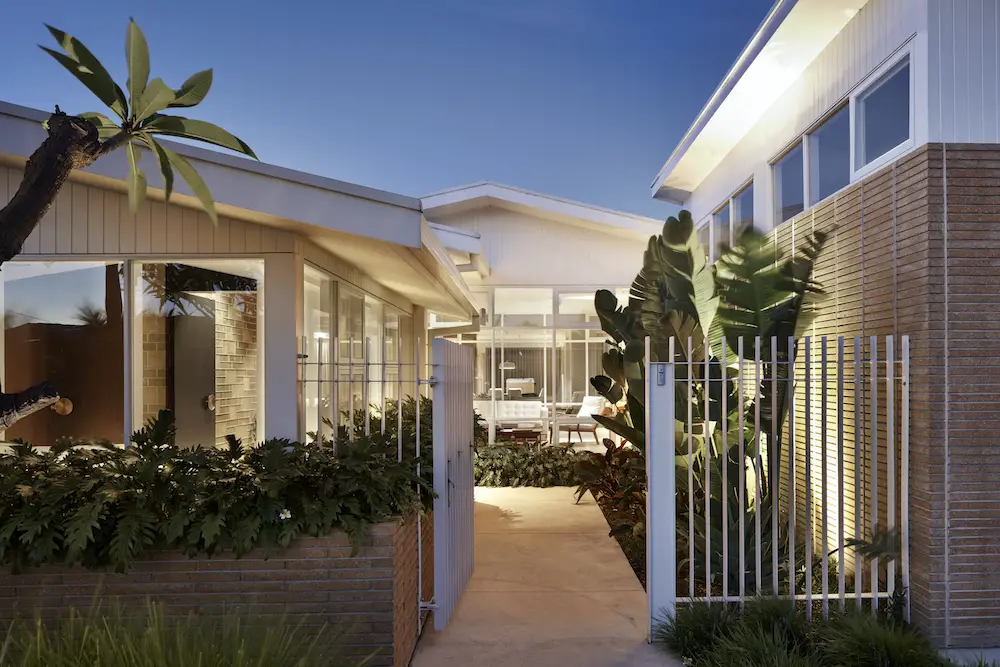
Photos by Sam Noonan